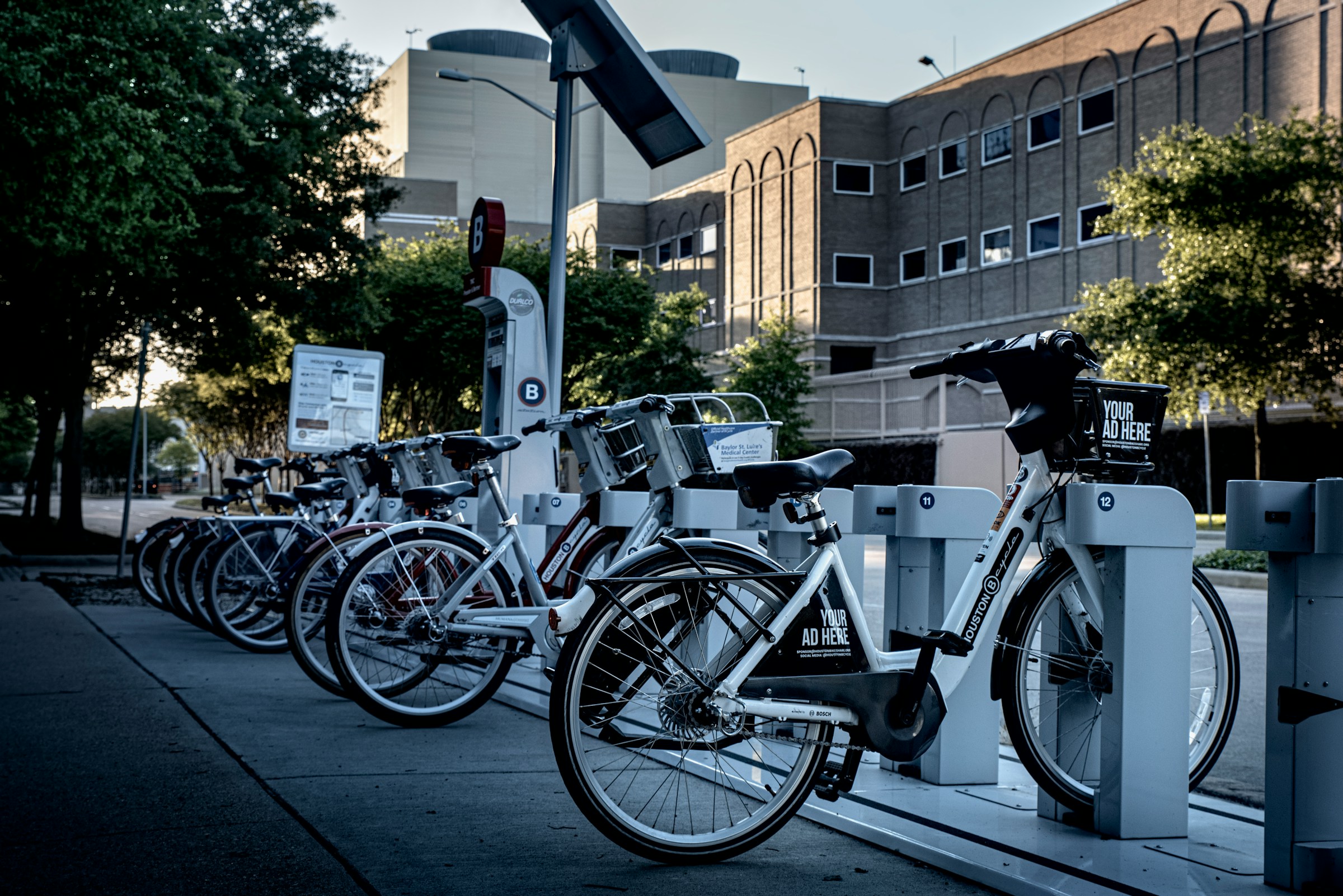The electric bike industry is evolving rapidly, with companies continuously pushing technological boundaries. One of the most exciting advancements is the integration of Artificial Intelligence (AI) into e-bike navigation and safety systems. AI is transforming the riding experience, making electric bikes smarter, safer, and more efficient. From intelligent route planning to real-time hazard detection, AI is revolutionizing how riders interact with their bikes. Let’s explore how companies are leveraging AI to enhance e-bike technology.
The Role of AI in Electric Bike Navigation
AI-powered navigation in electric bikes is transforming the way riders travel. Unlike traditional navigation systems that simply provide directions from one point to another, AI is focused on optimizing the entire journey for a better riding experience. It analyzes a variety of real-time data such as traffic patterns, road conditions, elevation changes, and weather forecasts to ensure that riders take the most efficient and safe routes. For instance, AI can predict heavy traffic areas and suggest alternative paths, helping to avoid congestion and reduce travel time. This not only improves the overall efficiency of the ride but also enhances the battery life by avoiding routes that require excessive energy consumption, like steep inclines.
Furthermore, AI navigation systems on e-bikes are adaptable and can adjust in real-time based on changing conditions. If a rider encounters an unexpected obstacle, like a road closure or an accident ahead, AI can instantly recalibrate the route, offering new alternatives that minimize disruption. This dynamic adjustment ensures that the rider is always on the safest and most efficient path, regardless of unforeseen changes in the environment. The adaptability of AI in navigation makes it far more advanced than traditional GPS, which cannot account for the fluidity of real-world riding conditions.
AI is also making it possible for riders to control their navigation with voice commands or even gestures. This hands-free operation ensures that the rider can maintain focus on the road, keeping both hands on the handlebars and eyes on the surroundings. By offering a seamless integration of AI-powered navigation features, e-bike manufacturers are enabling a more intuitive and safer riding experience. Riders can simply speak commands or make gestures to change their routes, access information, or interact with the system, reducing distractions and enhancing overall safety.
As AI technology continues to develop, the future of e-bike navigation is expected to become even more sophisticated. Personalized route recommendations will be based on individual preferences and riding history. AI will learn the rider’s patterns, such as favorite routes or preferred speeds, and provide tailored suggestions that improve the overall experience. Additionally, integration with smart city infrastructure could allow e-bikes to communicate with traffic signals and other urban systems, optimizing not only the rider’s route but also their interaction with the city environment. With AI at the helm, electric bike navigation is becoming smarter, more intuitive, and highly responsive to the needs of the rider.
Smart Route Optimization
Smart route optimization is one of the key features that AI brings to electric bikes, offering a significant upgrade over traditional GPS navigation systems. Here’s how AI analyzes and uses real-time data to improve route efficiency and overall ride experience:
- Traffic congestion: AI constantly monitors traffic patterns and can predict areas of heavy congestion. By analyzing this real-time data, AI suggests alternate routes that avoid delays, helping the rider save time and energy. This means that even if there’s an accident or roadblock up ahead, the system can quickly find a faster path.
- Road conditions: AI analyzes road surfaces and conditions to ensure the ride is as smooth as possible. It takes into account things like potholes, construction zones, and slippery conditions caused by rain or snow. By understanding these elements, AI can guide the rider towards safer, more comfortable routes, avoiding roads that may pose a risk or increase wear on the bike.
- Elevation levels: One of the most valuable aspects of AI-powered navigation is its ability to assess the elevation of the route. AI takes into account the terrain’s incline and adjusts the route accordingly, allowing the bike to conserve battery life. It may suggest flatter paths to reduce power consumption, especially when the battery is running low, ensuring the rider can reach their destination without running out of charge.
- Weather updates: AI integrates real-time weather information into route planning, providing alerts for adverse conditions such as heavy rain, strong winds, or snow. Based on the weather forecast, AI can suggest safer routes that avoid potentially hazardous conditions. This feature not only improves safety but also makes the ride more comfortable by steering riders clear of extreme weather.
Real-Time Adaptability
| Factor | AI Response | Benefit | Example | Outcome |
| Rider Behavior | AI learns the rider’s preferences and habits. | Personalizes the navigation experience. | If a rider frequently avoids busy streets, AI suggests similar routes. | The rider receives customized route suggestions based on their habits. |
| Traffic Conditions | AI analyzes real-time traffic data to detect delays. | Avoids traffic jams and congestion. | If an accident is reported ahead, AI will find a quicker alternative route. | Reduced travel time by avoiding delays and traffic bottlenecks. |
| Road Conditions | AI monitors road conditions for potential hazards. | Prevents accidents and ensures safety. | AI alerts the rider about construction zones or slippery roads ahead. | Safer ride by steering clear of hazardous or damaged roads. |
| Weather Changes | AI incorporates live weather data to suggest routes. | Ensures the rider is safe in varying weather. | During a storm, AI reroutes to sheltered or drier paths. | Rider avoids dangerous conditions like flooding or ice. |
| Unexpected Obstacles | AI detects and reacts to obstacles like roadblocks. | Quickly adjusts routes to ensure continued safety. | If a road is closed due to an accident, AI instantly finds an alternative path. | Minimizes disruptions and ensures the ride continues smoothly. |
Voice and Gesture-Controlled Navigation
Voice and gesture-controlled navigation is an exciting feature that is gaining traction in the electric bike industry, offering a seamless and hands-free way to interact with e-bike systems. Many e-bike companies are now integrating AI-powered voice assistants and gesture recognition into their bikes to enhance convenience and safety for riders. This technology allows riders to change routes, access important information, or adjust settings without needing to remove their hands from the handlebars or take their eyes off the road. The ability to control the bike’s navigation system through simple voice commands or gestures offers a more intuitive and safer riding experience, particularly in situations where distraction could lead to accidents.
The voice assistant feature allows riders to interact with their e-bike in a natural, conversational manner. With just a few spoken words, riders can ask for directions, request route changes, or even ask about battery levels and traffic conditions. This hands-free approach ensures that riders can stay fully engaged with their environment while still having full control over their bike’s navigation system. For example, if a rider wants to avoid a traffic jam, they can simply say, “Find an alternate route,” and the system will immediately suggest a new path. This reduces the need to manually adjust settings on the bike or use a phone, making the entire experience more efficient and less distracting.
In addition to voice commands, some e-bike companies are also experimenting with gesture-controlled navigation. With this feature, riders can control the navigation system by making simple hand gestures while riding. For instance, a rider could make a specific hand signal to indicate a left or right turn, or even swipe their hand in a certain direction to zoom in on the map. This technology relies on sensors that detect and interpret the rider’s movements, offering a level of interaction that feels natural and unobtrusive. Gesture control adds a new layer of accessibility for riders, particularly those who may not want to speak aloud while riding or those who prefer using hand motions instead.
Both voice and gesture-controlled navigation are about making the riding experience more intuitive and safe. These systems eliminate the need for riders to fumble with screens, buttons, or phones while navigating. They allow riders to keep their attention on the road and surroundings, ultimately reducing the risk of accidents caused by distractions. As AI continues to improve, we can expect even more advanced features, such as customized voice commands and gesture recognition that adapt to individual riding styles. With these innovations, the future of e-bike navigation is becoming increasingly user-friendly and focused on rider safety.
AI-Enhanced Safety Features in Electric Bikes
AI-enhanced safety features are transforming how electric bikes protect riders, helping to prevent accidents and improve overall awareness during rides.
- Collision Detection and Prevention: AI-powered sensors and cameras detect obstacles such as vehicles, pedestrians, and cyclists around the rider. These systems can provide real-time alerts to warn of potential collisions and, in some cases, automatically apply braking assistance to prevent accidents from occurring. This technology helps ensure that the rider remains aware of their surroundings, even in busy urban environments.
- Blind Spot Detection: With the use of AI, e-bikes are now equipped with blind spot detection systems that notify the rider when there’s an object or another vehicle in their blind spot. This makes lane changes and turns safer, reducing the risk of collisions from areas that might not be easily visible to the rider.
- Lane Departure Alerts: AI can monitor the rider’s position on the road and provide warnings if they unintentionally drift out of their lane. This feature is especially useful for riders in urban settings or on busy highways where lane discipline is critical for safety.
- Predictive Maintenance: AI continuously monitors the e-bike’s key components, such as the brakes, motor, and battery, by analyzing data from sensors. It predicts potential malfunctions before they happen, alerting the rider to perform maintenance. By detecting issues early, AI reduces the likelihood of mechanical failures that could lead to accidents on the road.
- Emergency Stop Assistance: In the event of an emergency, AI systems can assist the rider by triggering an emergency stop function, which applies brakes more effectively and quickly than a human rider might be able to. This can help avoid or reduce the severity of an accident, especially in unexpected situations.
- Real-Time Hazard Detection: AI constantly analyzes the rider’s environment for potential hazards like potholes, loose gravel, or slippery surfaces. It can issue warnings or adjust the bike’s behavior (such as reducing speed) to avoid or mitigate the risk posed by these hazards. This feature enhances the rider’s overall awareness, keeping them safer while navigating difficult terrain or road conditions.
Collision Detection and Prevention
| Feature | AI Response | Benefit | Example | Outcome |
| Automatic Braking Assistance | AI detects sudden obstacles and activates the brakes. | Prevents or reduces the severity of accidents. | If a pedestrian suddenly steps in front of the bike, AI applies brakes to stop. | The rider avoids collision, reducing injury risks. |
| Vibration Alerts | AI triggers a vibration in the handlebars when a potential collision is detected. | Alerts the rider to take action without distraction. | If a vehicle is approaching too closely, the handlebars vibrate. | The rider becomes aware of a potential danger and reacts. |
| Audio Alerts | AI uses sound cues to notify the rider of nearby threats. | Ensures the rider is aware of surrounding hazards. | The system sounds an alert when a cyclist is approaching from behind. | The rider adjusts their position or speed, avoiding collision. |
| Blind-Spot Detection | AI identifies vehicles or objects in the rider’s blind spots. | Prevents dangerous lane changes or turns. | The bike alerts the rider when a vehicle is detected in the blind spot during a lane change. | Safer riding by ensuring the rider doesn’t unintentionally cut off other vehicles. |
| Obstacle Recognition | AI identifies pedestrians, cyclists, or vehicles ahead. | Increases rider awareness and enhances safety. | AI alerts the rider of a cyclist ahead by identifying their position and movement. | The rider remains aware of the surroundings and avoids potential collisions. |
Predictive Maintenance
Predictive maintenance is a game-changer for electric bike riders, as it uses AI algorithms to anticipate issues before they become major problems. By continuously analyzing riding patterns and sensor data, AI can predict when parts of the bike, like the battery, brakes, or motor, need attention. This proactive approach ensures that riders are informed about potential issues early on, reducing the likelihood of sudden breakdowns or accidents caused by mechanical failure. Instead of waiting for something to go wrong, riders receive timely alerts about their bike’s condition, allowing them to schedule maintenance at a convenient time and avoid being stranded on the road.
One of the most critical areas where predictive maintenance plays a role is battery performance. AI systems track how the battery is performing during rides and monitor factors such as charge cycles, temperature, and overall efficiency. If the system detects any irregularities or performance degradation, such as a decline in battery life or an issue with charging, it alerts the rider ahead of time. This early warning helps prevent the rider from getting caught off guard with a dead battery, ensuring they have enough time to either recharge or replace the battery before it becomes an issue.
Another vital component that benefits from predictive maintenance is the brakes. The AI constantly monitors the wear and tear of brake pads, detecting when they are nearing the end of their life. By analyzing braking patterns and sensor data, the system can predict when the brakes need to be replaced. This prevents situations where worn-out brakes could compromise safety, especially in emergency stopping situations. Instead, riders are given a heads-up to replace or service their brakes, ensuring that they remain effective and reliable during every ride.
Finally, motor malfunctions can be some of the most frustrating issues for e-bike riders, but predictive maintenance helps avoid unexpected motor failures. AI systems track the performance of the motor, analyzing factors like speed, efficiency, and temperature. If the system detects any irregularities, such as unusual vibrations or overheating, it can alert the rider to get the motor checked. This proactive approach minimizes the risk of a motor failure, which could leave the rider stranded or, worse, cause an accident if the motor stops working during critical moments. Through predictive maintenance, AI ensures that all components of the electric bike remain in optimal condition, helping riders enjoy a safe and trouble-free riding experience.




